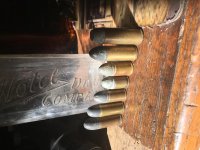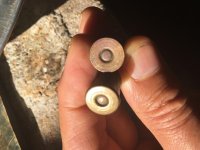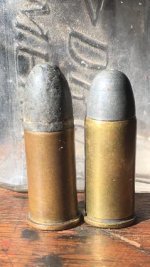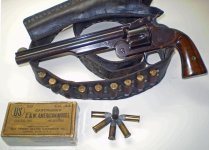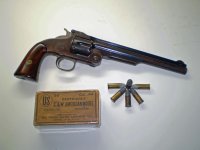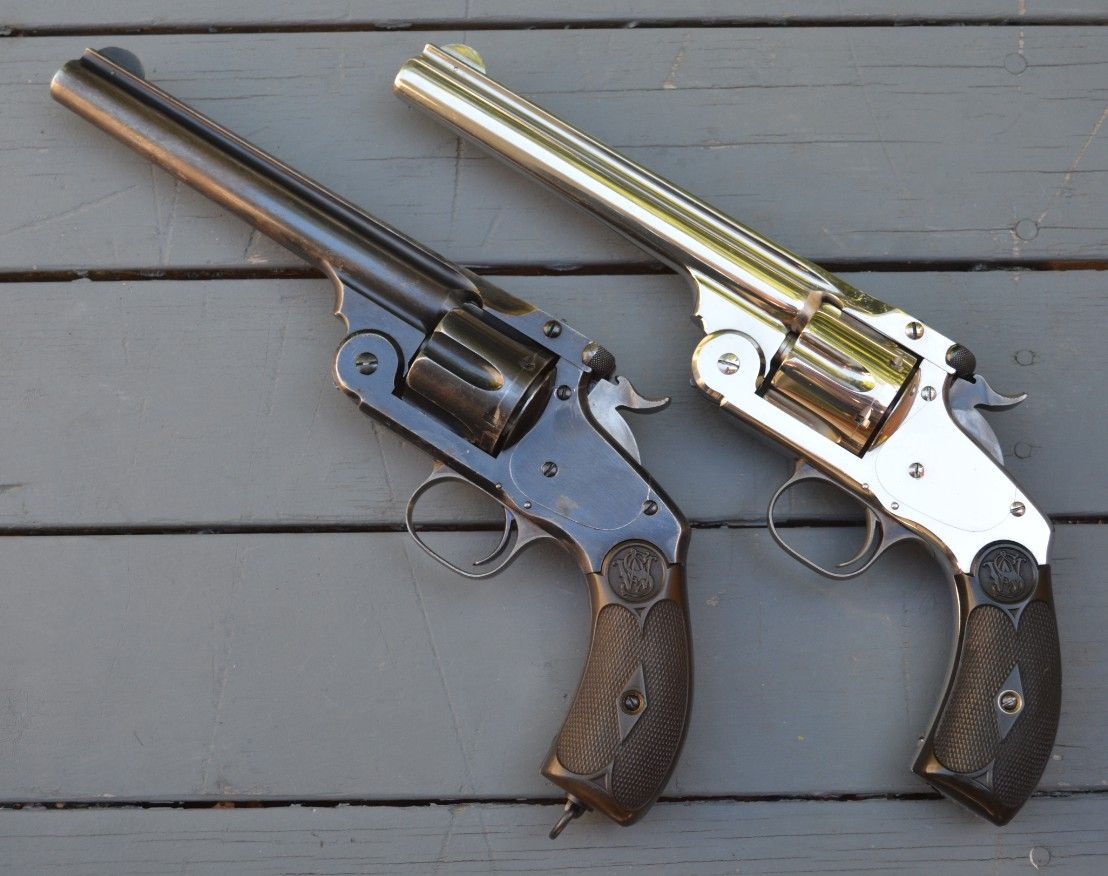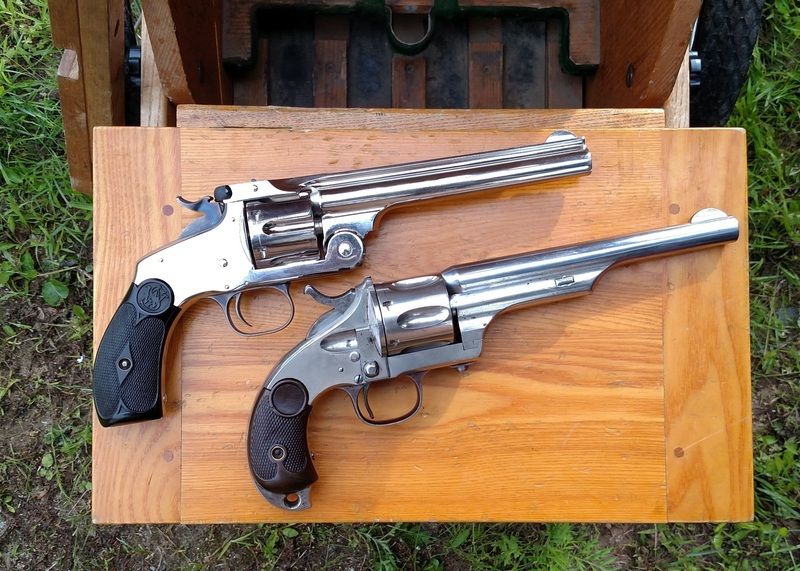nbedford
Well-known member
Went to the Conway Gun Show Sunday afternoon. Like the last Conway show, I did not get a chance to see all the tables; more like old home week with several dealers I knew, showing me what they'd picked up on Saturday, and wanting me to research a thing or two (frail reed for them to rely on, but fun). There for three hours and did not get a chance to buy a thing. One buddy who had a couple of tables had what appeared to be a long barreled Smith & Wesson number 3 in what he thought was 448 caliber due to the stamping on the barrel. I got my little eyepiece out and showed him it was not an 8 but a heavily stamped S. And that I assume it was 44 S&W (American?) It said: 44 S&W Ctg. It had the hard rubber grips not walnut, so I assume it was a S&W New Model No. 3, The serial number was @34,000, and had the right patent dates. He had bought a box of new factory 44 Russian ammo, and said he was going to shoot them in it. I did not think you could chamber them in a 44 S&W American, but lo and hold they'd chamber just fine. I advised him to get someone else to shoot it for him. Per Hatcher's Textbook, the diameter of the cartridge body of the 44 Russian was .453", and the diameter of the 44 American was .437 so I was kind of surprised that a 44 Russian would even chamber as it was almost .020" inches wider. Go figure. Finally he said he'd get a buddy to work up some milder loads, and I said if you are determined to shoot it, get him to either use black powder or Trail Boss for the load. BTW it did not have the spur on the trigger guard, and was about 89% blued. Is it possible that someone way back when had hogged the chambers on the cylinder out, or maybe swapped cylinders?

